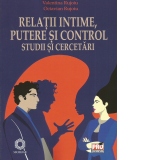The volume From Protection to Social Work of Family. Values and interventional strategies, author Gheorghița Nistor, written in English, is a work of interest for those who want to know and familiarize themselves with the protection and social work system for families and children in vulnerable situations in Romania. This book is based on an experience of over 25 years of study and scientific research in the field of family and child social work and is intended to be a useful tool for specialists in the socio-educational field, social workers, teachers, but also for those in training, students in the field of social work, and not only.
The volume presents in three chapters, different aspects and specific problems, which the Romanian family faces at the beginning of the millennium. In the first part, certain aspects of the system of protection and social work for family and child are presented, different principles of organization and operation of social services, especially for vulnerable families in difficulty. The second chapter presents different analyzes of the educational models and interventions carried out by the contemporary family as a socializing institution, positive socio-educational paradigms, but also the challenges they have to face. Some of these negative avatars are analyzed on which the social work services and the family must watch over and intervene: addiction to the online environment, drug use and addiction, parental migration and the transnational family. The practice of specialists in the field of social work is guided by values specific to the deontological and ethical framework for carrying out interventions, aspects also analyzed in an international context. Chapter three presents the relationship between applied ethics and professions in the social field, models for defining and analyzing ethical dilemmas in the practice of social work, with an emphasis on the principle of responsibility in the use of information in socio-educational interventions.
The theoretical and practical-applicative value of the work is clear for the analyzed field and we hope that it will represent a useful material for specialists involved in the constructive approach of social and educational inclusion of all children.



















